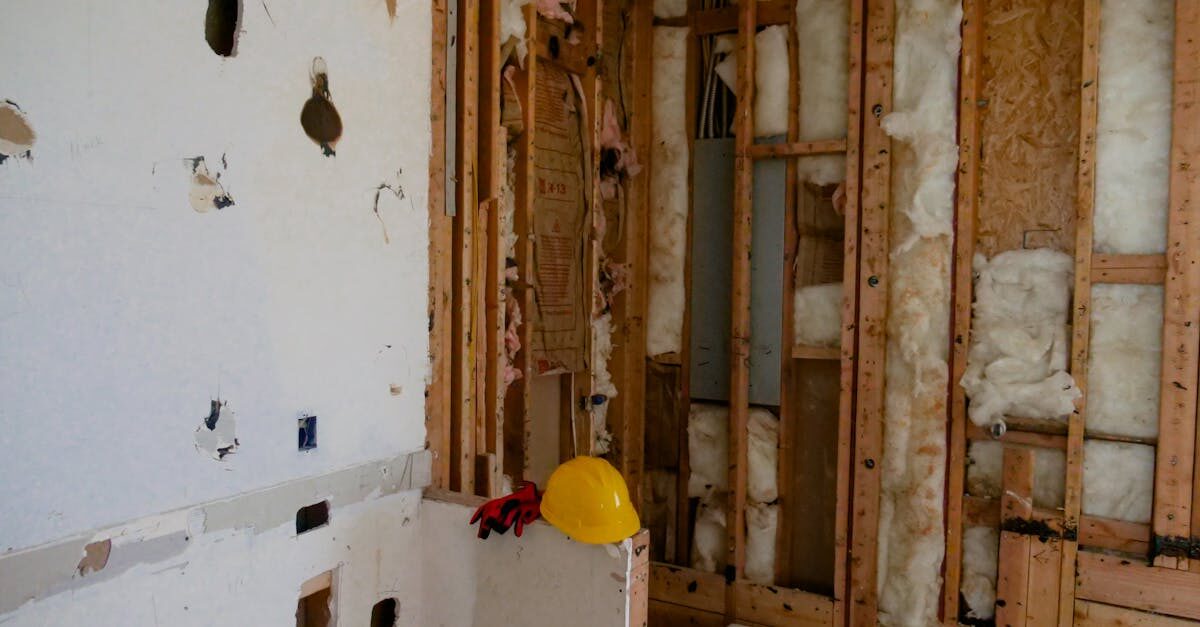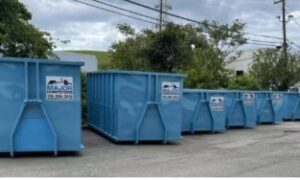Embarking on a residential demolition project on the Sunshine Coast can seem like a daunting task. Whether you’re clearing space for a new build, renovating an existing structure, or simply starting fresh, the process involves numerous considerations. From selecting the right contractor to understanding local regulations, each step plays a crucial role in ensuring a successful outcome.
In this comprehensive guide, we’ll walk you through the ins and outs of residential demolition on the Sunshine Coast. We’ll explore the key factors to consider, the various demolition methods available, and how to choose the best contractor for your specific needs. By the end of this article, you’ll be well-equipped to make informed decisions and navigate your demolition project with confidence.
So, let’s dive in and unravel the complexities of residential demolition, ensuring your Sunshine Coast property is ready for its next chapter.
Understanding Residential Demolition
When it comes to property development or renovation on the Sunshine Coast, residential demolition often serves as the crucial first step. But what exactly does this process entail? Let’s break it down.
Residential demolition involves the controlled dismantling or destruction of a home or other residential structure. This can range from completely razing a building to the ground to selectively removing specific parts of a structure. The scope of work can vary significantly depending on the project’s goals, the condition of the existing structure, and local regulations.
It’s important to note that residential demolition isn’t just about knocking things down. It’s a carefully planned and executed process that requires expertise, precision, and adherence to safety standards. Professional demolition contractors use a variety of techniques and equipment to ensure the job is done efficiently and safely.
The reasons for undertaking a residential demolition project can be diverse. Perhaps you’ve purchased a property with the intention of building your dream home from scratch. Maybe you’re looking to expand or significantly renovate an existing structure. Or perhaps you’re dealing with a building that’s become unsafe or uninhabitable due to age, damage, or other factors.
Whatever your motivation, understanding the basics of residential demolition is crucial. This knowledge will help you make informed decisions throughout the process, from choosing the right contractor to preparing for the various stages of the project.
In the following sections, we’ll delve deeper into the specifics of residential demolition on the Sunshine Coast, exploring everything from local regulations to different demolition methods. By the end, you’ll have a comprehensive understanding of what to expect when embarking on your demolition journey.
The Importance of Professional Contractors
When it comes to residential demolition on the Sunshine Coast, the significance of hiring professional contractors cannot be overstated. While it might be tempting to view demolition as a straightforward task of knocking down structures, the reality is far more complex and nuanced.
Professional demolition contractors bring a wealth of expertise and experience to the table. They understand the intricacies of different building structures and can anticipate potential challenges that might arise during the demolition process. This knowledge is crucial for ensuring the safety of workers, neighbouring properties, and the general public.
Moreover, professional contractors are well-versed in local regulations and permit requirements specific to the Sunshine Coast area. They can navigate the bureaucratic maze of paperwork and ensure that your project complies with all relevant laws and standards. This can save you significant time and potential legal headaches down the line.
Safety is another critical factor that underscores the importance of professional contractors. Demolition work involves numerous hazards, from falling debris to potential exposure to harmful materials like asbestos. Professional contractors are trained to identify and mitigate these risks, implementing robust safety protocols to protect everyone involved in the project.
Efficiency is yet another benefit of working with professionals. With their specialised equipment and tried-and-tested techniques, they can complete the demolition process much more quickly and effectively than an amateur attempt. This not only saves time but can also result in cost savings in the long run.
Lastly, professional contractors often have established relationships with waste management facilities and recycling centres. This means they can ensure that demolition waste is disposed of responsibly, minimising environmental impact and potentially salvaging materials for reuse or recycling.
In essence, while hiring professional contractors for your residential demolition project on the Sunshine Coast might seem like an additional expense, it’s an investment that pays dividends in terms of safety, efficiency, compliance, and peace of mind. As we delve deeper into the specifics of residential demolition in the following sections, the value of professional expertise will become even more apparent.
Key Factors to Consider in Residential Demolition
When planning a residential demolition project on the Sunshine Coast, there are several crucial factors to keep in mind. These considerations will not only impact the success of your demolition but also influence your future construction or renovation plans.
Property Assessment
The first step in any residential demolition project is a thorough assessment of the property. This involves evaluating the structure’s age, size, and construction materials. Older homes, for instance, may contain hazardous materials like asbestos or lead paint, which require special handling and disposal procedures.
Additionally, the property’s location plays a significant role. Is it in a densely populated area? Are there neighbouring structures that need protection? What about nearby trees or landscaping features? All these factors will influence the demolition approach and safety measures required.
Local Regulations and Permits
Navigating the regulatory landscape is crucial for any demolition project on the Sunshine Coast. Each local council may have specific requirements and processes for obtaining demolition permits. These regulations often cover aspects such as noise restrictions, working hours, and waste management.
It’s also important to consider heritage listings. If your property has historical significance, there may be additional regulations or restrictions to consider. Professional demolition contractors are typically well-versed in these local requirements and can guide you through the process.
Environmental Considerations
Sustainability is increasingly important in all aspects of construction and demolition. On the Sunshine Coast, there’s a growing emphasis on minimising environmental impact. This includes proper waste management, recycling where possible, and controlling dust and noise pollution.
Consider the potential for salvaging materials from the demolition. Items like timber flooring, doors, windows, and even bricks can often be reused or recycled, reducing waste and potentially offsetting some costs.
Site Access and Preparation
The accessibility of your property can significantly impact the demolition process. Narrow streets, overhanging trees, or limited space for equipment can all pose challenges. A professional assessment will determine the best approach based on your specific site conditions.
Preparation of the site is also crucial. This may involve disconnecting utilities, removing personal belongings, and setting up safety barriers. Your demolition contractor should guide you through this process to ensure everything is ready before work begins.
Future Plans
While it might seem counterintuitive, your plans for the property post-demolition should influence your demolition strategy. Are you planning to rebuild immediately? Will the land be left vacant for a period? The answers to these questions can affect decisions about site clearing, levelling, and even the extent of foundation removal.
Budget Considerations
Finally, it’s essential to have a clear understanding of your budget. While cost shouldn’t be the only factor in choosing a demolition contractor, it’s important to get detailed quotes and understand what’s included. Be wary of quotes that seem unusually low, as they may not account for all necessary aspects of the job.
Remember, unexpected issues can arise during demolition, so it’s wise to have a contingency fund. A reputable contractor will communicate clearly about potential additional costs and work with you to manage the budget effectively.
By carefully considering these factors, you’ll be well-prepared to embark on your residential demolition project on the Sunshine Coast. In the next section, we’ll explore the various demolition methods available and how to choose the right one for your specific needs.
Types of Residential Demolition Methods
When it comes to residential demolition on the Sunshine Coast, there’s no one-size-fits-all approach. The method chosen depends on various factors, including the structure’s size, location, and the project’s specific requirements. Let’s explore the most common demolition methods used in residential projects.
Manual Demolition
Manual demolition, also known as deconstruction, involves the careful dismantling of a structure by hand. This method is labour-intensive but offers several advantages:
- Precision: Ideal for partial demolitions or when preserving certain elements of the structure.
- Salvage Potential: Allows for the careful removal and potential reuse of valuable materials.
- Environmentally Friendly: Minimises waste and maximises recycling opportunities.
- Low Impact: Reduces noise and dust, making it suitable for densely populated areas.
While manual demolition can be time-consuming, it’s often the method of choice for heritage properties or when working in confined spaces.
Mechanical Demolition
Mechanical demolition utilises heavy machinery like excavators, bulldozers, and wrecking balls. This method is typically faster and more cost-effective for larger structures:
- Efficiency: Can demolish large structures quickly.
- Cost-Effective: Often more economical for complete demolitions.
- Versatility: Suitable for a wide range of building types and sizes.
- Safety: Reduces the need for workers to enter potentially unstable structures.
However, mechanical demolition can generate more dust and noise, which may be a concern in residential areas.
Selective Demolition
Selective demolition involves removing specific parts of a structure while leaving others intact. This method is often used in renovation projects:
- Precision: Allows for targeted removal of specific elements.
- Preservation: Ideal when certain parts of the structure need to be retained.
- Flexibility: Can combine manual and mechanical techniques as needed.
- Cost-Effective: Can be more economical than full demolition in renovation scenarios.
Selective demolition requires careful planning and execution to ensure the remaining structure’s stability.
Implosion
While less common in residential settings, implosion can be used for larger structures:
- Speed: Can bring down large buildings in seconds.
- Spectacle: Often used for high-profile demolitions.
- Efficiency: Minimises on-site demolition time.
- Complexity: Requires extensive planning and expertise.
Due to its complexity and potential risks, implosion is rarely used in residential demolitions on the Sunshine Coast.
Choosing the Right Method
Selecting the appropriate demolition method depends on several factors:
- Structure Size and Type: Larger buildings may require mechanical methods, while smaller structures might benefit from manual techniques.
- Location: Dense urban areas may necessitate quieter, less disruptive methods.
- Time Constraints: If speed is crucial, mechanical demolition might be preferred.
- Budget: Manual methods can be more labour-intensive and thus more expensive, but may offer better salvage opportunities.
- Environmental Concerns: Consider methods that minimise waste and maximise recycling potential.
- Local Regulations: Some areas may have restrictions on certain demolition methods.
- Future Plans: Your post-demolition plans may influence the chosen method.
A professional demolition contractor will assess these factors and recommend the most suitable method for your specific project. They’ll consider not just the demolition itself, but also factors like waste management, site preparation, and adherence to local regulations.
In the next section, we’ll delve into the crucial process of selecting the right demolition contractor for your Sunshine Coast project, ensuring you have the expertise needed to execute your chosen demolition method safely and effectively.
Selecting the Right Demolition Contractor
Choosing the right demolition contractor is arguably the most critical decision you’ll make in your residential demolition project on the Sunshine Coast. The right contractor can ensure a smooth, safe, and efficient process, while the wrong choice could lead to delays, additional costs, or even legal issues. Here’s what to consider when selecting a demolition contractor:
Licensing and Insurance
First and foremost, ensure that any contractor you’re considering is properly licensed and insured. In Queensland, demolition contractors must hold a QBCC licence in the appropriate class. This licence ensures they have the necessary qualifications and meet industry standards.
Insurance is equally crucial. Your chosen contractor should have comprehensive liability insurance and workers’ compensation coverage. This protects you from potential liability in case of accidents or property damage during the demolition process.
Experience and Expertise
Look for contractors with a proven track record in residential demolition on the Sunshine Coast. Experience matters in this field, as seasoned contractors will have encountered and overcome various challenges specific to the local area.
Consider asking potential contractors about:
- Their years of experience in the industry
- Similar projects they’ve completed in your area
- Any specialised expertise they have (e.g., heritage buildings, asbestos removal)
- Their familiarity with local regulations and permit processes
References and Reviews
Don’t hesitate to ask for references from past clients. A reputable contractor should be able to provide these readily. Additionally, look for online reviews and testimonials. While a few negative reviews aren’t necessarily a deal-breaker, pay attention to how the company responds to criticism.
Equipment and Techniques
Inquire about the equipment and techniques the contractor uses. Modern, well-maintained equipment can ensure more efficient and safer demolition. Also, consider contractors who employ environmentally friendly practices and prioritise recycling and proper waste management.
Safety Record
Safety should be a top priority in any demolition project. Ask potential contractors about their safety protocols and their track record. A good contractor will have clear safety procedures in place and be able to explain how they mitigate risks on the job site.
Communication and Transparency
Choose a contractor who communicates clearly and is transparent about their processes. They should be willing to explain each step of the demolition process, provide detailed quotes, and keep you informed throughout the project.
Local Knowledge
A contractor with local knowledge of the Sunshine Coast area can be invaluable. They’ll be familiar with local regulations, common challenges in the area, and have established relationships with local authorities and waste management facilities.
Cost and Value
While it’s tempting to go with the lowest bid, remember that in demolition, as in many things, you often get what you pay for. Focus on value rather than just cost. A slightly higher upfront cost might save you money in the long run through efficiency, proper waste management, and avoiding potential issues.
Contract and Guarantees
Once you’ve chosen a contractor, ensure all agreements are put in writing. The contract should clearly outline the scope of work, timeline, cost, and any guarantees or warranties offered. Be wary of contractors who are reluctant to provide a detailed written agreement.
Questions to Ask Potential Contractors
When interviewing potential demolition contractors, consider asking:
- How long have you been in business, especially in the Sunshine Coast area?
- Can you provide references from similar projects?
- What’s your approach to waste management and recycling?
- How do you handle unexpected issues that arise during demolition?
- What safety measures do you have in place?
- Are you familiar with local regulations and permit requirements?
- What’s your typical timeline for a project of this size?
- Do you offer any guarantees or warranties on your work?
By thoroughly vetting potential contractors and asking the right questions, you can ensure you’re partnering with a professional who will handle your residential demolition project on the Sunshine Coast with expertise and care. In the next section, we’ll explore the demolition process itself, giving you a clear picture of what to expect once you’ve selected your contractor.
The Demolition Process: What to Expect
Understanding the demolition process is crucial for property owners embarking on a residential demolition project on the Sunshine Coast. While each project is unique, there are general steps that most demolitions follow. Let’s walk through what you can typically expect:
Initial Consultation and Site Assessment
The process begins with an initial consultation with your chosen demolition contractor. They’ll visit your property to assess the site, taking into account factors such as:
- The size and structure of the building
- Access points for equipment
- Proximity to neighbouring properties
- Potential hazards (e.g., asbestos)
- Environmental considerations
This assessment forms the basis for the demolition plan and quote.
Planning and Permits
Once you’ve agreed to proceed, the planning phase begins. This involves:
- Developing a Demolition Plan: Your contractor will create a detailed plan outlining the demolition method, timeline, and safety measures.
- Obtaining Permits: Your contractor should handle the process of obtaining necessary permits from local authorities. This may include demolition permits, waste management plans, and any special permits required (e.g., for asbestos removal).
- Notifying Neighbours: It’s courteous (and often required) to inform neighbouring properties about the upcoming demolition.
Site Preparation
Before demolition can begin, the site needs to be prepared:
- Utility Disconnections: All utilities (electricity, gas, water, sewage) must be safely disconnected and capped off.
- Hazardous Material Removal: If asbestos or other hazardous materials are present, they’ll need to be safely removed by licensed professionals.
- Salvage Operations: If you’re planning to salvage any materials or fixtures, these should be removed at this stage.
- Erecting Safety Barriers: Fencing and signage will be put up to secure the site and ensure public safety.
The Demolition
The actual demolition process will vary depending on the chosen method, but generally involves:
- Soft Strip: Interior fixtures and fittings are removed.
- Structural Demolition: The main structure is demolished using the agreed-upon method (manual, mechanical, or a combination).
- Waste Sorting: Materials are sorted for recycling or disposal as demolition progresses.
Throughout this process, dust suppression techniques will be used to minimise environmental impact.
Site Clearing and Clean-up
Once the structure is demolished, the site needs to be cleared:
- Debris Removal: All demolition debris is removed from the site.
- Recycling and Disposal: Materials are taken to appropriate recycling facilities or waste management centres.
- Site Levelling: The site is graded and levelled as per the project requirements.
Final Inspection and Sign-off
The final step involves:
- A thorough site inspection to ensure all work has been completed as agreed
- Obtaining final approval from local authorities
- Providing you with all necessary documentation, including waste disposal receipts and completion certificates
Timeline Considerations
The duration of a residential demolition project on the Sunshine Coast can vary significantly depending on factors such as:
- Size and complexity of the structure
- Chosen demolition method
- Presence of hazardous materials
- Weather conditions
- Local authority processes
While a straightforward demolition of a small to medium-sized house might be completed in a few days, the entire process from initial consultation to final sign-off could take several weeks.
Communication Throughout the Process
A good demolition contractor will keep you informed throughout the process. Expect regular updates on:
- Progress of the demolition
- Any unexpected issues encountered
- Timeline adjustments if necessary
- Completion of key milestones
By understanding what to expect during the demolition process, you can better prepare for the project and ensure a smooth experience. In the next section, we’ll explore some key safety considerations in residential demolition, highlighting the importance of professional expertise in this potentially hazardous process.
Safety Considerations in Residential Demolition
Safety is paramount in any demolition project, especially in residential areas like the Sunshine Coast where other properties and the public may be in close proximity. Professional demolition contractors prioritise safety through careful planning, rigorous protocols, and ongoing vigilance. Let’s explore the key safety considerations in residential demolition:
Risk Assessment
Before any work begins, a comprehensive risk assessment is crucial. This involves:
- Identifying potential hazards (structural instability, hazardous materials, etc.)
- Evaluating the likelihood and potential impact of each risk
- Developing strategies to mitigate or eliminate these risks
A thorough risk assessment forms the foundation of a safe demolition project.
Hazardous Materials Management
Many older homes on the Sunshine Coast may contain hazardous materials such as:
- Asbestos: Common in buildings constructed before the 1990s
- Lead: Often found in old paint or plumbing
- Mould: Can develop in damp or poorly ventilated areas
These materials require specialised handling and disposal by licensed professionals. Proper identification and removal of hazardous materials is crucial not only for worker safety but also for public health and environmental protection.
Site Security
Securing the demolition site is essential to prevent unauthorised access and protect the public. This typically involves:
- Erecting sturdy perimeter fencing
- Installing clear warning signs
- Implementing access control measures for workers and authorised personnel
- Ensuring the site is secure outside of working hours
Personal Protective Equipment (PPE)
All workers on a demolition site should be equipped with appropriate PPE, including:
- Hard hats
- Safety glasses or goggles
- Respiratory protection (especially when dealing with dust or hazardous materials)
- Steel-toed boots
- High-visibility clothing
- Hearing protection
Proper use of PPE is crucial for protecting workers from potential injuries.
Dust Control
Dust generated during demolition can pose health risks and create nuisance for neighbouring properties. Effective dust control measures include:
- Water sprays to suppress dust
- Covering debris piles
- Using enclosed chutes for debris removal
- Implementing air monitoring systems in sensitive areas
Noise Management
Demolition can be noisy, which can be disruptive in residential areas. Strategies to manage noise include:
- Adhering to local regulations regarding working hours
- Using noise barriers where appropriate
- Selecting equipment with lower noise emissions when possible
- Informing neighbours about expected noise levels and duration
Structural Stability
Maintaining structural stability throughout the demolition process is crucial. This involves:
- Careful planning of the demolition sequence
- Regular structural assessments as demolition progresses
- Use of temporary supports where necessary
- Ensuring workers are trained to recognise signs of potential collapse
Equipment Safety
Safe operation of demolition equipment is essential. This includes:
- Regular maintenance and inspections of all machinery
- Ensuring operators are properly trained and certified
- Implementing clear communication protocols between machine operators and ground workers
- Establishing exclusion zones around operating machinery
Emergency Preparedness
Despite best efforts, emergencies can occur. A robust emergency response plan should include:
- Clear evacuation procedures
- First aid facilities and trained personnel on-site
- Emergency contact information readily available
- Regular safety drills and training for workers
Environmental Protection
Protecting the environment is an important safety consideration. This involves:
- Proper containment and disposal of potentially harmful materials
- Measures to prevent soil and water contamination
- Recycling and responsible waste management practices
Compliance with Regulations
Adhering to all relevant safety regulations is non-negotiable. This includes:
- Work Health and Safety regulations
- Local council requirements
- Industry-specific guidelines and best practices
Professional demolition contractors on the Sunshine Coast should be well-versed in these regulations and committed to full compliance.
Ongoing Safety Management
Safety isn’t a one-time consideration but an ongoing process throughout the demolition project. This involves:
- Regular safety meetings and toolbox talks
- Continuous monitoring of site conditions
- Adapting safety measures as the project progresses
- Encouraging a culture of safety awareness among all workers
By prioritising these safety considerations, professional demolition contractors ensure that residential demolition projects on the Sunshine Coast are carried out with minimal risk to workers, the public, and the environment. In the next section, we’ll explore the environmental aspects of demolition, highlighting the importance of sustainable practices in modern demolition projects.
Environmental Considerations in Residential Demolition
In today’s environmentally conscious world, sustainable practices in residential demolition are not just desirable – they’re essential. On the Sunshine Coast, where natural beauty is a key asset, responsible demolition practices play a crucial role in preserving the local environment. Let’s explore the key environmental considerations in residential demolition:
Waste Management and Recycling
Effective waste management is at the heart of environmentally friendly demolition. This involves:
- Waste Sorting: Separating materials on-site for easier recycling and disposal.
- Recycling: Identifying materials that can be recycled, such as metals, concrete, and timber.
- Reuse: Salvaging materials like doors, windows, and fixtures for potential reuse.
- Proper Disposal: Ensuring non-recyclable waste is disposed of responsibly at approved facilities.
By maximising recycling and minimising landfill waste, demolition contractors can significantly reduce the environmental impact of their projects.
Hazardous Material Handling
Proper management of hazardous materials is crucial for environmental protection:
- Asbestos: Must be removed and disposed of by licensed professionals following strict guidelines.
- Lead-Based Paint: Requires careful removal to prevent soil and water contamination.
- Chemical Contaminants: Any chemicals found on-site need specialised disposal methods.
Ensuring these materials don’t enter the environment protects local ecosystems and public health.
Dust and Air Quality Control
Controlling dust and maintaining air quality is important for both environmental and health reasons:
- Water Sprays: Used to suppress dust during demolition.
- Covering Materials: Stockpiles of materials should be covered to prevent wind-blown dust.
- Air Monitoring: In sensitive areas, air quality monitoring may be necessary.
- Equipment Maintenance: Well-maintained equipment produces fewer emissions.
These measures help protect local air quality and reduce the impact on neighbouring properties.
Noise Pollution Management
While not strictly an environmental concern, noise management is crucial in residential areas:
- Working Hours: Adhering to local regulations on permissible working hours.
- Equipment Selection: Using quieter equipment where possible.
- Noise Barriers: Implementing temporary barriers to reduce noise spread.
Minimising noise disturbance helps maintain quality of life for local residents during the demolition process.
Soil and Water Protection
Preventing contamination of soil and water sources is a key environmental consideration:
- Erosion Control: Implementing measures to prevent soil erosion, especially important in the Sunshine Coast’s coastal areas.
- Runoff Management: Controlling site runoff to prevent contaminated water from entering local waterways.
- Spill Prevention: Having protocols in place to quickly address any spills of fuels or other contaminants.
These measures help protect the Sunshine Coast’s beaches, waterways, and groundwater resources.
Energy Efficiency
While demolition is inherently energy-intensive, steps can be taken to improve efficiency:
- Equipment Choice: Using fuel-efficient machinery where possible.
- Logistics Planning: Optimising site layout and processes to reduce unnecessary vehicle movements.
- Alternative Energy: Where feasible, using renewable energy sources for site operations.
Reducing energy consumption helps lower the overall carbon footprint of the demolition project.
Biodiversity Protection
In the ecologically rich Sunshine Coast region, protecting local flora and fauna is important:
- Tree Protection: Safeguarding trees not slated for removal.
- Wildlife Considerations: Being aware of and protecting any wildlife habitats on or near the site.
- Native Vegetation: Where site clearing is necessary, considering the replanting of native species.
These measures help maintain the Sunshine Coast’s rich biodiversity.
Sustainable Material Management
Thinking beyond the immediate demolition, contractors can contribute to broader sustainability:
- Material Recovery: Identifying materials that can be used in new construction projects.
- Local Sourcing: When materials are needed for site restoration, sourcing them locally to reduce transport emissions.
- Innovative Reuse: Exploring creative ways to repurpose demolition materials in landscaping or art projects.
These practices contribute to a circular economy approach in the construction industry.
Community Engagement
Engaging with the local community can enhance environmental outcomes:
- Communication: Keeping neighbours informed about environmental measures being taken.
- Education: Using the project as an opportunity to educate about sustainable demolition practices.
- Feedback: Being open to community input on environmental concerns.
This engagement fosters a positive relationship with the community and can lead to improved environmental practices.
Compliance and Best Practices
Adhering to environmental regulations and industry best practices is crucial:
- Local Regulations: Complying with Sunshine Coast Council’s environmental guidelines.
- Industry Standards: Following best practices set by industry bodies.
- Continuous Improvement: Staying updated on new environmentally friendly demolition techniques.
By prioritising these environmental considerations, demolition contractors on the Sunshine Coast can ensure their projects are not only efficient and safe but also environmentally responsible. This approach helps preserve the natural beauty and ecological integrity of the region while meeting the needs of property development.
In the next section, we’ll explore the cost factors involved in residential demolition, helping you understand what influences the price of your project and how to budget effectively.
Cost Factors in Residential Demolition
Understanding the cost factors involved in residential demolition on the Sunshine Coast is crucial for effective project planning and budgeting. While each project is unique, there are several common factors that influence the overall cost. Let’s explore these in detail:
Size and Scope of the Project
The size of the structure to be demolished is often the primary factor affecting cost:
- Square Footage: Larger homes generally cost more to demolish due to increased labour and disposal requirements.
- Number of Storeys: Multi-storey buildings are typically more complex and costly to demolish than single-storey structures.
- Scope of Work: Full demolition versus partial demolition or interior strip-outs can significantly impact costs.
Structure Type and Materials
The construction method and materials used in the building affect demolition costs:
- Brick and Concrete: These dense materials are more labour-intensive to demolish and dispose of.
- Timber Frame: Generally easier and quicker to demolish, potentially reducing costs.
- Steel Frame: May require specialised equipment, impacting overall expenses.
Site Access and Location
The property’s location and accessibility can influence costs:
- Urban vs. Rural: Urban sites may have higher costs due to traffic management and noise control requirements.
- Site Access: Limited access for machinery can necessitate more manual labour, increasing costs.
- Proximity to Disposal Facilities: Greater distances to recycling or waste facilities can increase transport costs.
Presence of Hazardous Materials
The discovery and removal of hazardous materials can significantly impact costs:
- Asbestos: Professional asbestos removal is costly but essential for safety and compliance.
- Lead Paint: Requires specialised handling and disposal.
- Other Contaminants: Chemicals or biological hazards may need specialised treatment.
Salvage and Recycling Opportunities
The potential for material salvage and recycling can affect overall costs:
- Salvageable Materials: Recovering valuable materials (e.g., hardwood floors, architectural features) can offset some costs.
- Recycling: While initially more labour-intensive, recycling can reduce disposal fees.
- Landfill Costs: Minimising waste sent to landfill through recycling can lead to cost savings.
Permits and Regulatory Requirements
Compliance with local regulations incurs costs:
- Demolition Permits: Fees for obtaining necessary permits from the Sunshine Coast Council.
- Environmental Assessments: May be required, especially for older properties.
- Traffic Management Plans: Often necessary in urban or high-traffic areas.
Time Constraints
The project timeline can impact costs:
- Rush Jobs: Expedited demolitions may incur premium rates.
- Flexible Timelines: Allow for more efficient resource allocation, potentially reducing costs.
Season and Weather Conditions
Seasonal factors can affect demolition costs:
- Wet Season Considerations: May require additional measures for erosion control and site management.
- Peak Season Pricing: Demolition costs may be higher during busy construction periods.
Additional Services
Some projects may require extra services, adding to the overall cost:
- Site Clearing: Removing vegetation or landscaping features.
- Foundation Removal: Complete removal of foundations can add significant cost.
- Utility Work: Capping or relocating utility lines.
Equipment and Labour Costs
The type of equipment and labour required influences the project cost:
- Specialised Machinery: Some projects may need specific equipment, affecting rental or operational costs.
- Labour Intensity: Projects requiring more manual labour versus machine-driven demolition can impact costs.
Waste Disposal Fees
Disposal costs can be a significant portion of the overall budget:
- Landfill Fees: Vary based on the volume and type of waste.
- Recycling Costs: While often lower than landfill fees, still factor into the overall cost.
- Hazardous Waste Disposal: Specialised disposal of hazardous materials incurs higher fees.
Insurance and Liability Coverage
Adequate insurance coverage is essential but adds to the project cost:
- Liability Insurance: Protects against potential damages or injuries.
- Specific Project Insurance: May be required for high-value or complex demolitions.
Unexpected Issues
It’s wise to budget for contingencies:
- Structural Surprises: Hidden issues discovered during demolition may require additional work.
- Environmental Discoveries: Unexpected contamination can lead to increased costs.
Cost-Saving Strategies
While many factors can increase costs, there are ways to potentially reduce expenses:
- Thorough Planning: Detailed assessments and planning can prevent costly surprises.
- Flexible Timing: Being open to non-peak periods can lead to better rates.
- Maximise Recycling: Reducing landfill waste can lower disposal costs.
- Salvage Valuable Materials: Can offset some demolition expenses.
- Compare Quotes: Get detailed quotes from multiple reputable contractors.
Understanding these cost factors helps in budgeting realistically for your residential demolition project on the Sunshine Coast. While it’s tempting to focus solely on the bottom line, remember that the cheapest option isn’t always the best value. Prioritise contractors who offer transparency in their pricing, have a strong safety record, and demonstrate commitment to environmental best practices.
In the next section, we’ll wrap up our comprehensive guide with some final thoughts and key takeaways for successfully navigating your residential demolition project on the Sunshine Coast.
Conclusion: Navigating Your Residential Demolition Project
When it comes to residential demolition Sunshine Coast residents always choose one name that stands head and shoulders above the rest: Sellcon Demolitions. With an unrivalled blend of experience, safety, and local know-how, they’ve rightfully earned their reputation as the region’s premier demolition contractor.
Sellcon’s team doesn’t just demolish buildings; they craft customised solutions for each project, ensuring rapid completion without compromising on quality or safety. Their eco-friendly practices and competitive pricing make them the go-to choice for discerning Sunshine Coast homeowners looking to transform their properties.
What truly sets Sellcon apart is their deep-rooted local expertise. They understand the unique challenges and opportunities of the Sunshine Coast landscape, allowing them to tackle any demolition project with precision and care. Their specialised equipment and experienced team work in harmony to bring your vision to life, whether you’re clearing space for a dream home or reimagining your commercial property.
Don’t settle for second best when it comes to your demolition needs. Experience the Sellcon difference today – where safety meets efficiency, and local expertise meets unparalleled service.



































